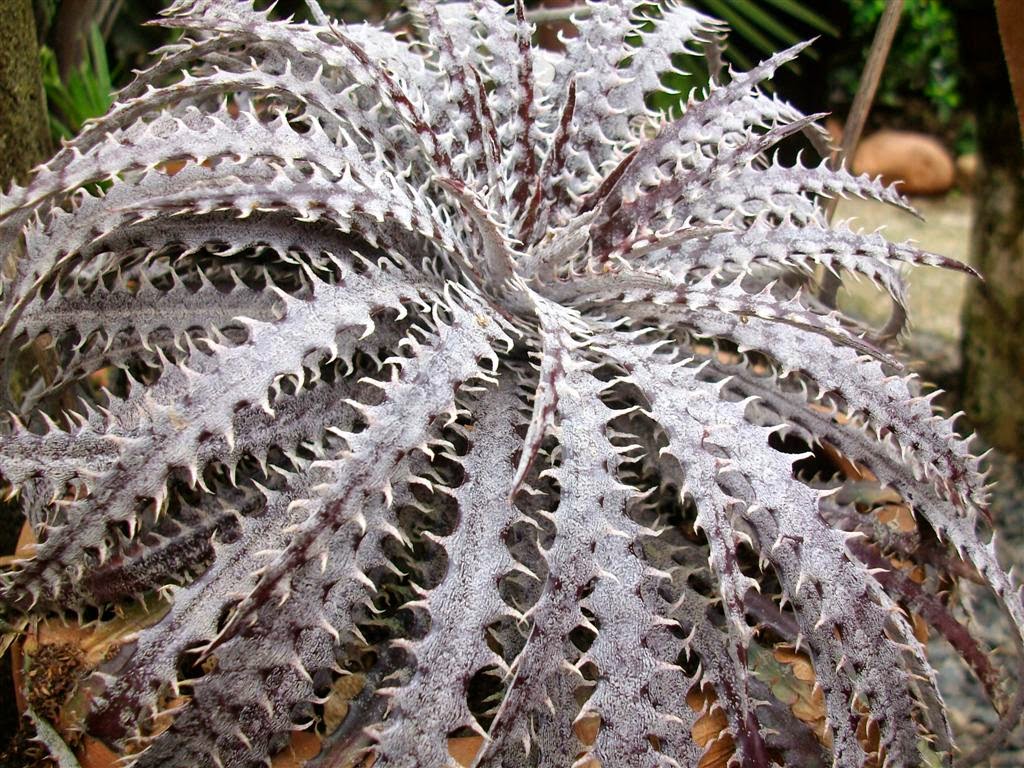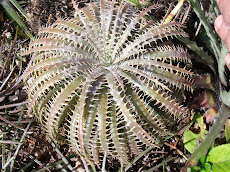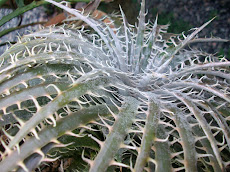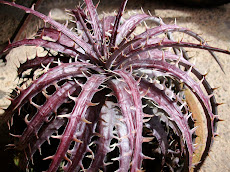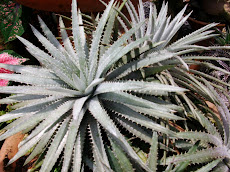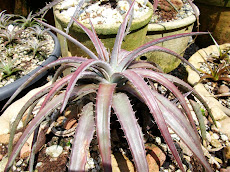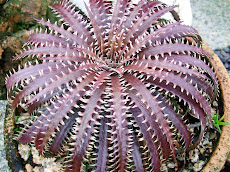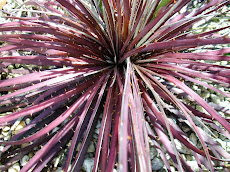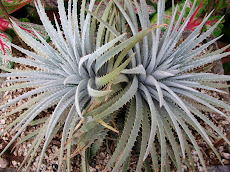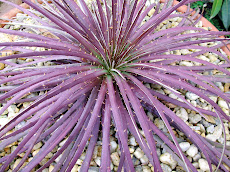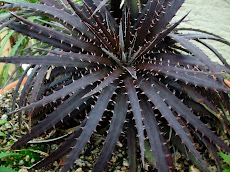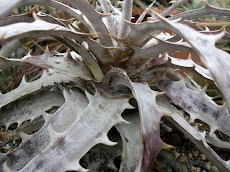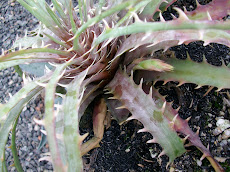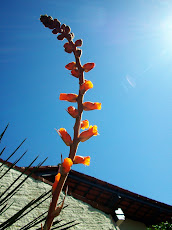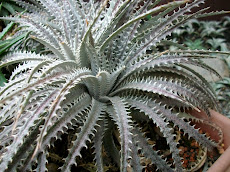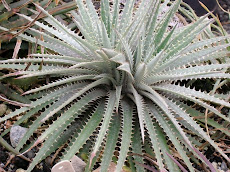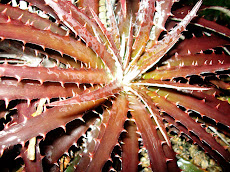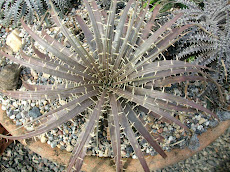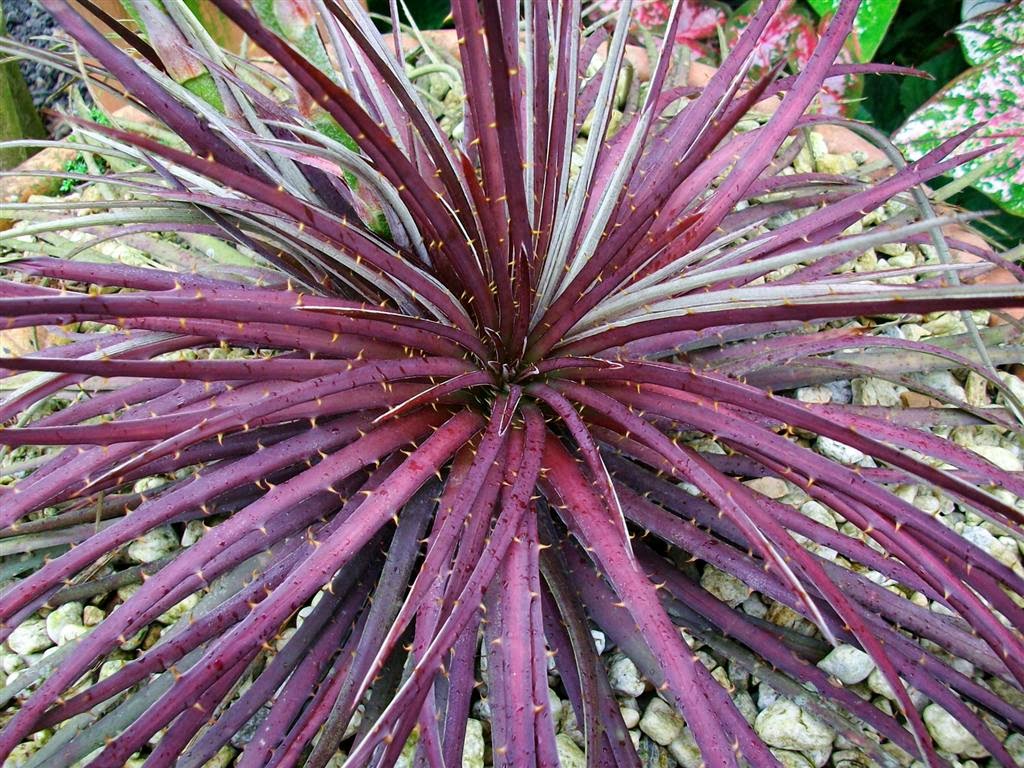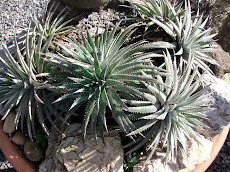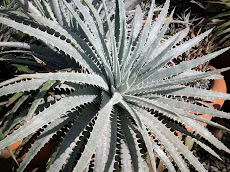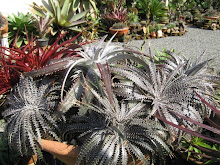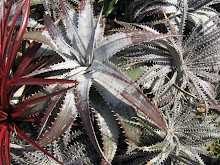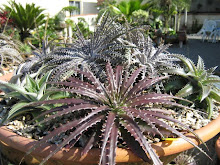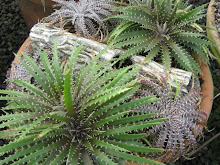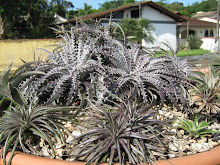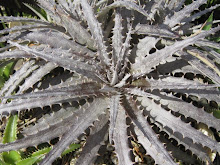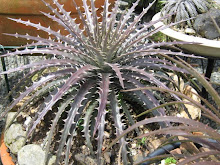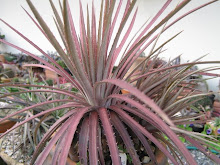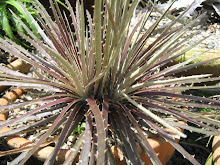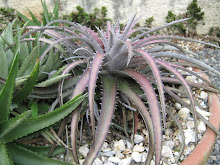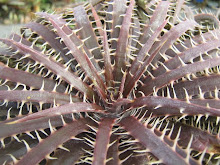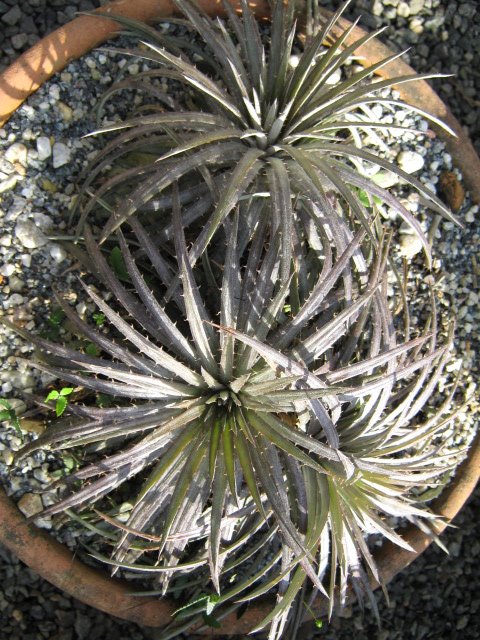 Dyckia estevesii
Dyckia estevesii Distic fan form
and the normal spiral form.
It seems almost nobody knew of this plant, this spiral plain normal form.
This is something science is learning little by little. Dyckias are surprisingly
rich of never seen before facts.
Not long ago all American plants should cross the Atlantic to be taxonomic classified.
Europe received them in a endless array of novelties.
They honored everyone they thought deserved and and specially the European rose pale faced guys.Most of our species have names just a very smart guy can spell.
But this is not so....

It seems Scientists get so used to that they rarely visited the place from where the plant came from. Non described species turned to exist only in the most inaccessible and remote areas of my country so the scientists still did not dare to get out of their air conditioned offices.
Going afield meaned to get face to face to the jaguar, the mosquitoes, the Indians, the snakes, the ordinary native settlers, heat, mighty rivers, high mountains, no road at all, running white waters, the Portuguese language, Brazilian people and more.....
So Scientists continued to rely to bush guys the job of collecting.
The bushman has to trans form his Portuguese words into something a bit more understandable and here the errors begin to be evident. Then the scientist will try to put these words int a death language words Latin that most probably he or she does not understand a word and describing turned into a play of keys. If this does not fits here it fits there and if not in any over there.
Taxonomic work was a job to be done inside the conditioned comfortable offices not far from home, scientist´s home.
Dyckias I guess are the plants the most allured and eluded scientists and science in the last decades. Dyckias have many many faces.
To get to know a Dyckia take years of observing in nature and in culture. Even is need to germinated their seeds and observe the results. Hybrids in nature are far more common than once was thought.
Science must be a bit more altruistic and brave concerning to Dyckias and Taxonomy must update itself we cross the Ocean in some hours and normally almost always sleeping, savoring a good wine or watching a most recent Hollywood release. Martius times were others and thanks God long ago passed by.
 Dyckia estevesii
Dyckia estevesiiWe and science will learn with this that Dyckias are surprisingly
more alluring than we once thought they were.


























































